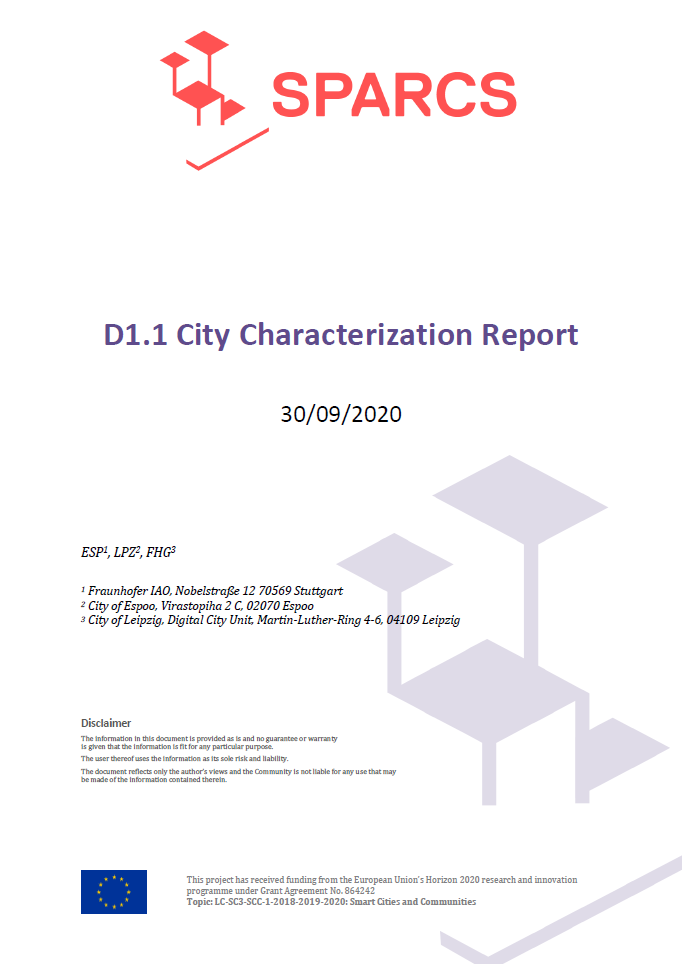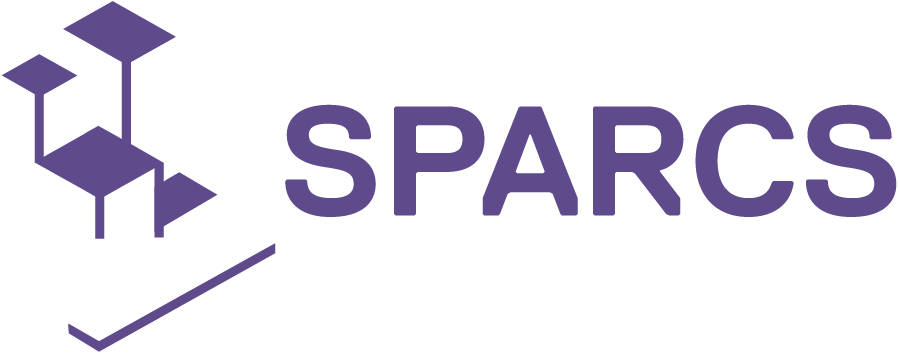D1.01 City Characterization Report
SPARCs’s overall objective is to achieve citizens’ inclusive free carbon urban community by integrating the following key factors: technologies for energy positivity in buildings and districts, citizen engagement, city planning and governance, flexible grid management and energy storage and; e mobility as an energy system element. SPARCs targets to tackle the multifaceted challenges that cities are called to solve by creating the ecosystems necessary for the urban energy transformation in cities towards a citizens-inclusive Sustainable energy Positive & zero cARbon CommunitieS. The cornerstones of SPARCs are two lighthouse cities; Espoo in Finland and Leipzig in Germany along with five follower cities across Europe. These two Lighthouse cities aim to prove that the urban energy transformation of a city into a carbon neutral urban community is socially and economically viable.
Lighthouse city of Espoo has joined in the Covenant of Mayors 2020 commitment in 2010, forming the foundation of its decarbonization process, and in 2012, the Espoo Sustainable Energy Action Plan (SEAP) was accepted, setting the ambition for its greenhouse gas emissions target. Subsequently, in February 2018 Espoo signed, the Covenant of Mayors 2030, and is now in the process of signing the Sustainable Energy and Climate Action Plan (SECAP) commitment. Additionally, in 2018, the City of Espoo became a pioneer for the United Nations Agenda 2030, requiring Espoo to commit to reaching the UN’s Sustainable Development Goals by 2025. The lighthouse city of Leipzig has joined in the German Climate Alliance in 1994, setting a strict goal to reduce the CO2 emissions with the Energy and Climate protection Concept already in 2011. This has been enforced with the endorsement of the Climate protection Work Program of 2014, receiving its first certification (Gold Certification) in 2017 by the European Energy Award (EEA) Benchmarking System.
This report acts as a city diagnosis that allows for a precise understanding of the conditions and characteristics of the Lighthouse cities on both the qualitative and qualitative levels. The city diagnosis, data collection & preliminary analysis allow for an accurate understanding of each Lead City specific profile, focusing on both the raw data from heterogeneous energy sources available in Lighthouse cities (e.g. general data, energy, buildings, mobility, ICT, etc.) and already available city-level, action-field indicators information that allowed the drafting of this report, highlighting the quantifiable sustainability performance in selected sectors (energy, emissions, transportation, buildings).

